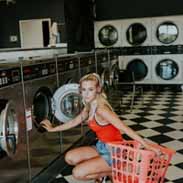Circular Flow Model Flashcards, test questions and answers
Discover flashcards, test exam answers, and assignments to help you learn more about Circular Flow Model and other subjects. Don’t miss the chance to use them for more effective college education. Use our database of questions and answers on Circular Flow Model and get quick solutions for your test.
What is Circular Flow Model?
A Circular Flow Model is a representation of the economy that shows how money, goods, and services move through markets among households and businesses. The model helps to illustrate two basic truths about an economy: 1) all income generated in the economy eventually finds its way back into it as spending on goods and services, and 2) households are both suppliers of labor (resources) to firms, which hire them for wages; and consumers of final goods produced by those firms. The circular flow model consists of three key components: households, business/firms/industry, and markets/institutions. Households provide resources such as labor to businesses in exchange for income (wages). Businesses use these resources to produce goods or services which they can then sell in markets at a profit. This profit represents their incomes plus any interest or dividends they may have received from financial investments outside the market system. Institutions like banks facilitate payments between buyers and sellers by creating credit opportunities or providing banking services. This circular flow of money is vital because it keeps the economy running smoothly – if one part stops working properly, there will be a ripple effect across sectors that could cause significant economic disruption. For example, if people start losing jobs due to rising unemployment rates then this would lead to lower household incomes as well as decreased consumer spending on products from businesses. This could lead to further job losses within industries so that a vicious cycle starts where no one has money left over for purchases or investments thus stifling economic growth throughout the economy until something changes. The circular flow model plays an important role in understanding macroeconomics since it goes beyond just explaining how individuals interact with each other but also explains how entire economies work together with various institutions playing different roles depending on their size and scope. It demonstrates how different factors like government policies can affect aggregate demand which then influences prices within a given period leading us closer towards achieving our economic goals such as full employment or price stability.






















